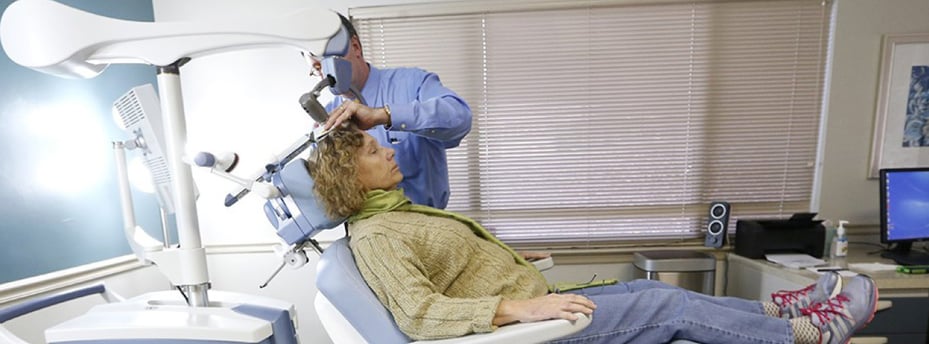TMS machines explained
Posted on February 15, 2019 by TMS Clinics Australia
What is a TMS machine?
Transcranial magnetic stimulation (TMS) machines are medical devices used to deliver magnetic therapy to the brain. In Australia, TMS is approved for use in people with depression who have failed 2 or more antidepressants.
Are there different types of TMS machines?
There are currently two different types of TMS that are approved in Australia to treat patients with depression. These are repetitive TMS (rTMS) and deep TMS (dTMS). The major difference between the two is how deep the magnetic pulses penetrate the brain. The machines that deliver TMS treatment have been used to treat many thousands of patients in specialised hospitals and clinics worldwide.
What are the main components of a TMS machine?
The main components of a TMS machine include:
- Coil: made of an enclosed electromagnet that generates and applies a pulsed magnetic field
- Flexible arm: connects the coil to the computer
- Computer: controls the coil and is used by clinicians to operate the machine
- Comfortable chair with optimal head support: ensures the patient is comfortable throughout the procedure.

Patient sits in the chair of the NeuroStar, a machine that delivers a magnetic pulse to the left dorso-lateral pre-frontal cortex of a patient’s brain, a region that is thought to be involved in depression. Dr John Bailey, right, administering the treatment.
What happens within the coil?
Electromagnetic fields are generated within the coil. The strength of the magnetic field is approximately 1.5 Tesla, which is like the magnetic field produced by magnetic resonance imaging (MRI) machines. These magnetic fields are turned on and off quickly and travel between 1.5 and 4 centimetres into the brain, directly below where the coil is positioned. With every pulse, or short burst of magnetic field, a clicking sound is produced.
As the magnetic fields move into the brain they produce very small electrical currents. The electrical currents stimulate the brain cells and encourage them to perform their normal activities. In people with depression, stimulating the cells in the prefrontal cortex allows them to release the neurotransmitters that are important in mood regulation and depression.
Is it safe to apply electricity to the brain?
The TMS machines used to treat depression have all been extensively tested, which is why they have been approved for use in Australian patients. There are built-in safety systems to ensure the machine functions properly. The brain itself uses electric signals to send and receive signals to other parts of the brain or the body. This is why a therapy that generates small electrical currents in underactive areas of the brain is effective.
You can find out more about TMS treatment by contacting the TMS Clinics Australia team by calling 1300 867 888 or emailing info@tmsaustralia.com.au